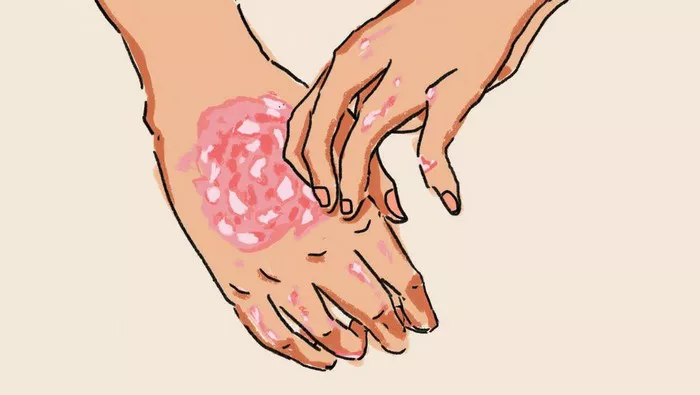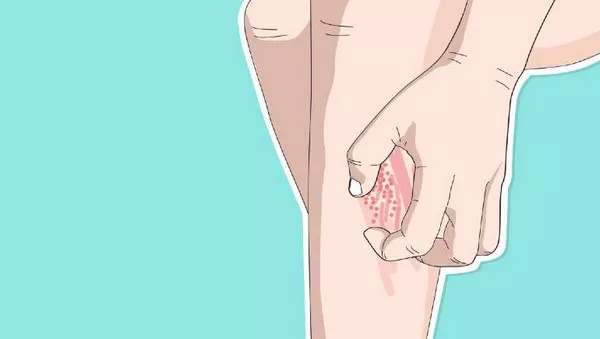The prevalence of eczema in Singapore has remained relatively stable over the past decade, with approximately one in five children and one in ten adults affected. However, there has been a noticeable increase in the number of individuals suffering from moderate to severe eczema, a condition characterized by skin that may ooze fluid, crust, or bleed.
Both KK Women’s and Children’s Hospital (KKH) and the National Skin Centre (NSC) have reported a rise in patients with moderate to severe atopic eczema, although exact figures are unavailable due to the lack of recent studies on the subject.
Atopic eczema, or atopic dermatitis, is the most common form of eczema. While it is not a congenital condition, it typically manifests in early childhood, often within the first few months of life.
Increase in Severe Eczema Cases
KKH, which sees around 20 new atopic eczema cases daily, has noticed a rise in the number of children with moderate and severe forms of the condition. These children represent approximately 20 to 30 percent of the eczema patients at the hospital, according to Associate Professor Mark Koh, head of the dermatology department at KKH.
At NSC, Dr. Yew Yik Weng, a senior consultant dermatologist, noted that while the overall number of eczema cases has remained stable, there has been a slight increase in more severe cases. In the year ending March 31, 2023, NSC handled over 14,000 new eczema cases. Epidemiological studies conducted by NSC show that moderate and severe cases account for about 25 percent of all eczema cases, with moderate cases making up 15 percent and severe cases 10 percent.
Environmental and Genetic Factors
Doctors believe that a combination of genetic factors and Singapore’s hot, humid climate contributes to the rise in eczema cases. Dust mites, which thrive in humid environments, are also a significant trigger for eczema, particularly in Singapore’s climate.
In addition to environmental factors, immune dysregulation is another factor that may explain the increase in moderate to severe cases of eczema. Stress is also cited as a major trigger for flare-ups, with higher socio-economic communities experiencing a higher incidence of atopic eczema, although the reasons for this remain unclear.
Prof Koh explained that genetics plays a key role in eczema development, with children of parents who have atopic conditions like allergic rhinitis, asthma, or allergic conjunctivitis having a higher risk of developing eczema themselves. If one parent has an atopic condition, the child’s risk is 40 to 50 percent. If both parents are affected, the risk increases to 70 to 80 percent. Some patients also have mutations in the filaggrin gene, a key gene involved in skin barrier function.
New Treatment Options and Their Costs
Treatment for moderate to severe eczema has evolved significantly with the introduction of new therapies. For many years, treatment options were limited, mainly consisting of lifestyle modifications, topical steroids, and moisturizers. However, the advent of biologic drugs, particularly dupilumab (marketed as Dupixent), has provided a breakthrough for patients suffering from moderate to severe eczema.
Dupilumab, the world’s first biologic drug approved for atopic dermatitis, has shown significant efficacy. At KKH, Prof Koh reported that 95 to 97 percent of patients treated with dupilumab experience at least a 75 to 90 percent improvement within six to 12 months. Some patients may even see over 90 percent improvement.
However, dupilumab is costly, with each dose priced around $1,000. The medication is administered every two weeks for adults. Additionally, JAK inhibitors, another class of drugs for moderate to severe eczema, can cost between $400 and $1,200 per month, depending on the dosage. Regular monitoring is required, which adds to the overall cost.
Despite the high cost, biologic drugs and JAK inhibitors are increasingly being preferred over systemic immunosuppressants, which can cause long-term side effects like kidney and liver damage, blood disorders, cancers, and chronic infections.
At KKH, over 250 children and adolescents have been treated with dupilumab. One such patient, five-year-old Faris Zafran, was prescribed Dupixent during a severe eczema flare-up, which involved pus-filled wounds on his leg. With the support of hospital funding and insurance, Faris now receives the treatment every six weeks, in addition to using moisturizers and steroid creams.
Calls for Greater Support
The high cost of these treatments has led to calls for greater support for individuals with moderate to severe eczema. On November 12, MacPherson MP Tin Pei Ling raised the issue in Parliament, proposing that eczema be recognized as a chronic disease. This recognition would enable patients to access subsidies for expensive treatments like dupilumab and allow them to use up to $700 of their MediSave annually.
In response, Senior Minister of State for Health Janil Puthucheary explained that the Clinical Advisory Committee had decided in 2020 not to include eczema in the Chronic Disease Management Programme (CDMP) due to variations in care practices and the lack of standardized national treatment guidelines. The Ministry of Health is currently working on developing these guidelines, which could lead to a re-evaluation of whether eczema should be included in the CDMP.
As for dupilumab, Puthucheary stated that the drug was not recommended for subsidy at its current price, as its benefits do not justify the cost.
Related topics



























